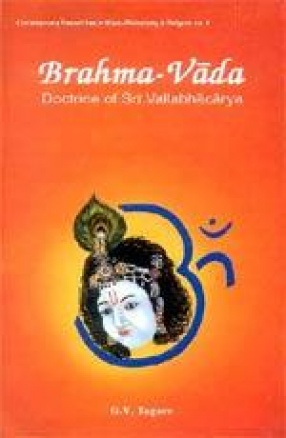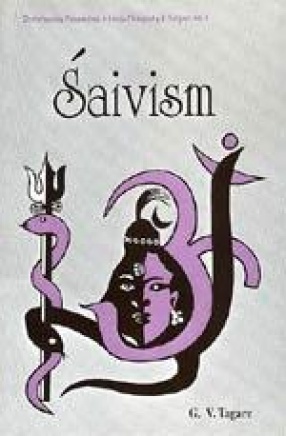
G V Tagare

Showing all 15 books















The present volume is one of the series of Ancient Indian Tradition and Mythology. The purest gems he hidden in the bottom of the ocean or in the depth of rocks. One has to dive into the ocean or delve into the rocks to find them out. Similarly, truth lies concealed in the language which with the passage of time has become obsolete. Man has to learn that language before he discovers that truth. But he has neither the means nor the leisure to embark on that ...

This present volume comprises Book VII : Nagara Khanda of the Skanda Purana. The reader- comes a number of interesting legends which comprise the stories of the birth of the Linga; dialogue between Trisanku and Vasistha; coronation of Hariscandra; performance of a Satra for Trisanku; attainment of' a boon by Visva-mitra and Svarga by Trisanku; gift of a city to Brahmanas; etc.


In India, philosophy, be it Jain, Buddhist or Vedic (Brahmanical) is the basis of some pathway to Liberation (Moksa). So is Pratyabhijna 'recognition', 'recognition that man or every individual soul is no other than the Supreme Soul or Parama Siva Himself' This inspiring concept uplifts the spirit of the downtrodden and transforms him into a dignified pilgrim on the path to Moksa-Pratyabhijna, declares its formulator, is for the well-being of the ...

The present volume is one of the series of Ancient Indian Tradition and Mythology. The purest gems lie hidden at the bottom of the ocean or in the depth of rocks. One has to dive into the ocean or delve into the rocks to find them out. Similarly, truth lies concealed in language which, with the passage of time, has become obsolete. Man has to learn that language before he discovers that truth. But he has neither the means nor the leisure to embark on that ...




Skanda Purana, which is the biggest among the Mahapuranas, is a vast store-house for getting insight into all aspects and phases of ancient Hinduism. Being a veritable source of Indian Tradition and Mythology, it occupies a unique position in this respect. Named after Skanda, son of Siva, this Purana expounds doctrine and worship of Siva. It also contains legends of Siva, especially his battles with Daityas and Danavas. There are sections on Yoga – Dhyana ...

Stirred on, perhaps mystified, by Nature’s grand design, the Vedic seers pondered upon the nature of Ultimate Reality: ‘Brahman’, and how it is related to Man and the World. Over the time, these early reflections turned into profound, intricately metaphysical discussions, even polemics. And the dialogue continued vigorously in the post-Upanishadic period — leading to the emergence of many spiritual-metaphysical schools of thought, represented notably by ...

Along with Brahma and Vishnu, Shiva makes the Hindu trinity: the trimurti. The name, Shiva signifies ‘auspiciousness’. But he is Rudra: the fierce, as well. Often looked upon as the principle of cosmic destruction, he also creates and reproduces. In abstract terms, Shiva is the first cause, the source of consciousness, the very substratum of the universe. Shaivism: the worship of Shiva, is not just a dominant religious tradition. It is also a philosophy ...


